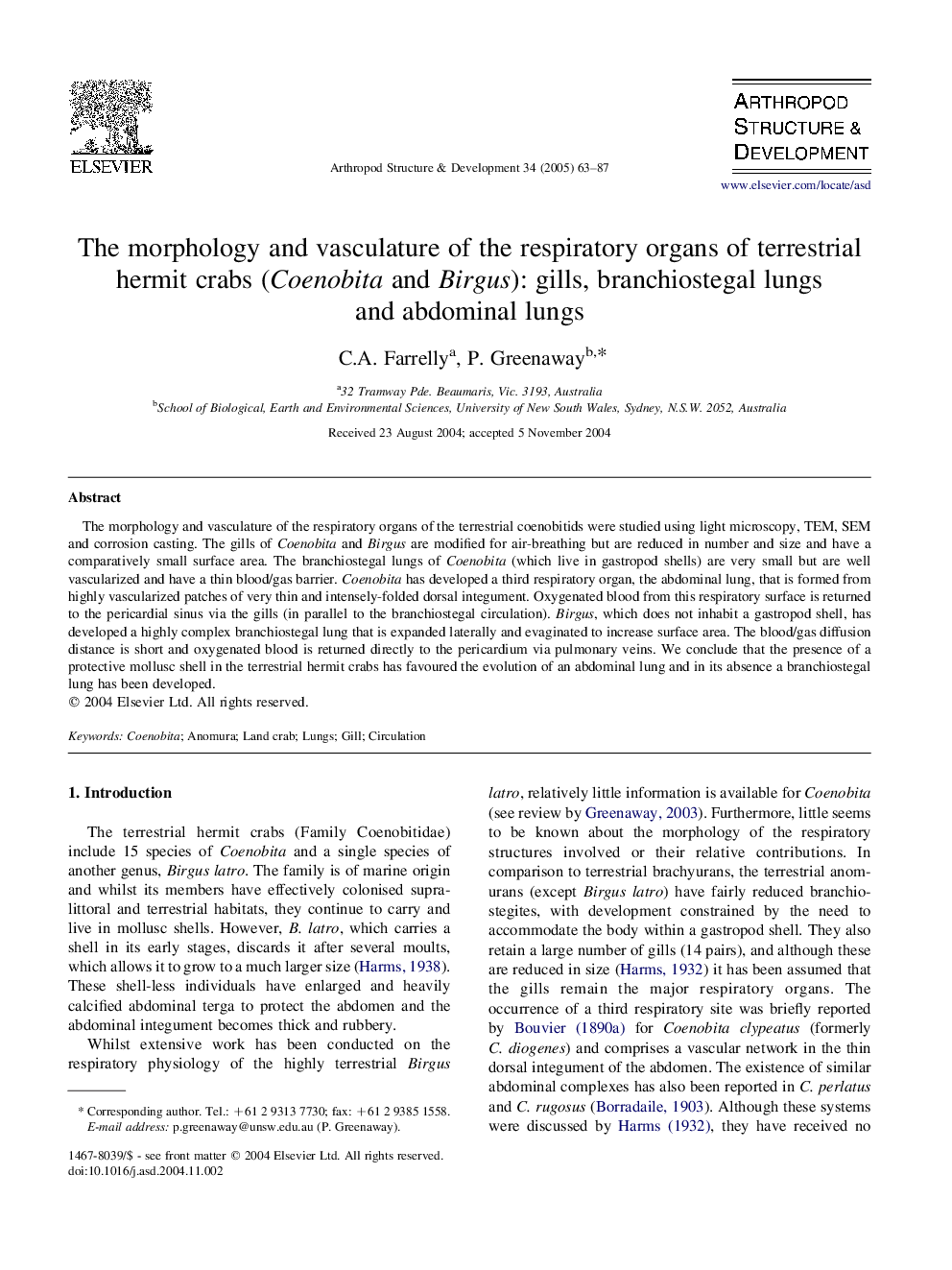| کد مقاله | کد نشریه | سال انتشار | مقاله انگلیسی | نسخه تمام متن |
|---|---|---|---|---|
| 9104159 | 1153200 | 2005 | 25 صفحه PDF | دانلود رایگان |
عنوان انگلیسی مقاله ISI
The morphology and vasculature of the respiratory organs of terrestrial hermit crabs (Coenobita and Birgus): gills, branchiostegal lungs and abdominal lungs
دانلود مقاله + سفارش ترجمه
دانلود مقاله ISI انگلیسی
رایگان برای ایرانیان
موضوعات مرتبط
علوم زیستی و بیوفناوری
علوم کشاورزی و بیولوژیک
دانش حشره شناسی
پیش نمایش صفحه اول مقاله

چکیده انگلیسی
The morphology and vasculature of the respiratory organs of the terrestrial coenobitids were studied using light microscopy, TEM, SEM and corrosion casting. The gills of Coenobita and Birgus are modified for air-breathing but are reduced in number and size and have a comparatively small surface area. The branchiostegal lungs of Coenobita (which live in gastropod shells) are very small but are well vascularized and have a thin blood/gas barrier. Coenobita has developed a third respiratory organ, the abdominal lung, that is formed from highly vascularized patches of very thin and intensely-folded dorsal integument. Oxygenated blood from this respiratory surface is returned to the pericardial sinus via the gills (in parallel to the branchiostegal circulation). Birgus, which does not inhabit a gastropod shell, has developed a highly complex branchiostegal lung that is expanded laterally and evaginated to increase surface area. The blood/gas diffusion distance is short and oxygenated blood is returned directly to the pericardium via pulmonary veins. We conclude that the presence of a protective mollusc shell in the terrestrial hermit crabs has favoured the evolution of an abdominal lung and in its absence a branchiostegal lung has been developed.
ناشر
Database: Elsevier - ScienceDirect (ساینس دایرکت)
Journal: Arthropod Structure & Development - Volume 34, Issue 1, January 2005, Pages 63-87
Journal: Arthropod Structure & Development - Volume 34, Issue 1, January 2005, Pages 63-87
نویسندگان
C.A. Farrelly, P. Greenaway,